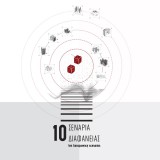The following research paper attempts the description, understanding and categorization, through architectural examples, of spatial conditions created through the transparent materiality and geometry. The main objective of this work is the search for the connection of geometry with the materiality of transparent surfaces, the position of the architect in each example considered, the identification of spatial conditions that are created and how the geometry and materiality is acting on the subject (Voyeurism, Control, Cheating of Subject, Confusion of Limits, Movement of Subject).
Initially it is performed an analysis and investigation of the relationship of the subject with the environment in which it occurs and the type of transparency, literal and phenomenal, according to Rowe and Slutzky. Also the degree of transparency of the surfaces is defined in a system in order to then become sited in selected examples. The presentation of test examples follows, categorized based on the spatial conditions and the results reached. In each example, in a first stage coding of each case is performed in the form of diagram based on the organization of information in order to understand the relationship between geometry and materiality and the source of light. Thus, the need for abstract representation of the examples arises and the organized data are simulated to construct separate models for each case. Finally, the models are placed in a similar environment (light source, trees, sky, darkness, indoor –outdoor space) and becomes their photographic imprint. The choice of scenarios was done independently of the alleged schemes and the chronology in which they operate. A key criterion in the choice of examples was the diversity in layout geometry and the degree of transparency, so that the scenarios project the widest possible range of effects of spatial conditions.
The research study proves that the experimental search of the relationship of geometry to the materiality of transparent surfaces are intertwined in the creation of different spatial situations. Intermediate but necessary element in the transfer of visual messages to the receiver is the presence of light, the nature and direction. Note that the experimental data collection and subjective organization into categories conclude that the concept of transparency condenses several levels of meanings. In some cases the study of the spatial conditions reveals different architectural approaches and assemblies of the concept.
